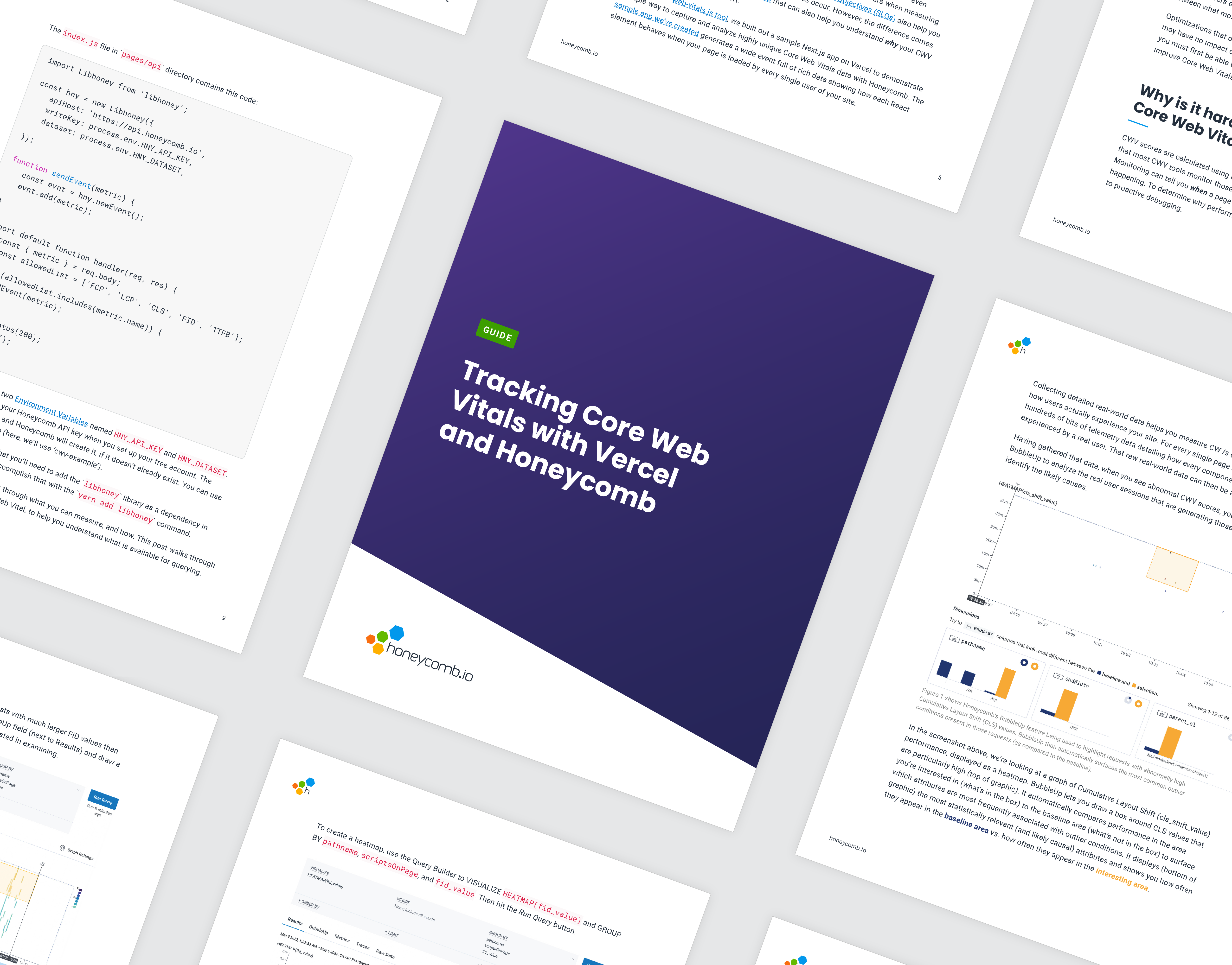Tracking Core Web Vitals with Vercel and Honeycomb
Frontend applications are where your company is closest to the end user experience. It doesn’t matter how well your backend systems are performing if your frontend applications are slow to load and they feel sluggish to users. Not only will your users have a bad experience, but your mobile sites or pages will also get downranked by Google.
Google’s Core Web Vitals (CWV) are used to rank the performance of mobile sites or pages. It’s easy to see when your CWV scores are low, but it’s not always clear exactly why that’s happening. Many frontend engineering teams have tools that center around reactive monitoring practices driven by capturing metrics. As Honeycomb readers, you already know that metrics help you see when problems are happening, but not why.
However, the same Honeycomb observability practices that excel at detecting problems with backend systems are just as applicable to frontend mobile apps and pages. Our new guide, Tracking Core Web Vitals with Honeycomb and Vercel, shows frontend engineering teams how to use observability to capture, analyze, and debug CWV performance. In this guide, you’ll learn:
- What Core Web Vitals are
- How Core Web Vitals are debugged
- How Honeycomb helps you correctly measure and debug CWVs
- How to capture CWVs and debug your applications using Honeycomb and Vercel
- and more!


